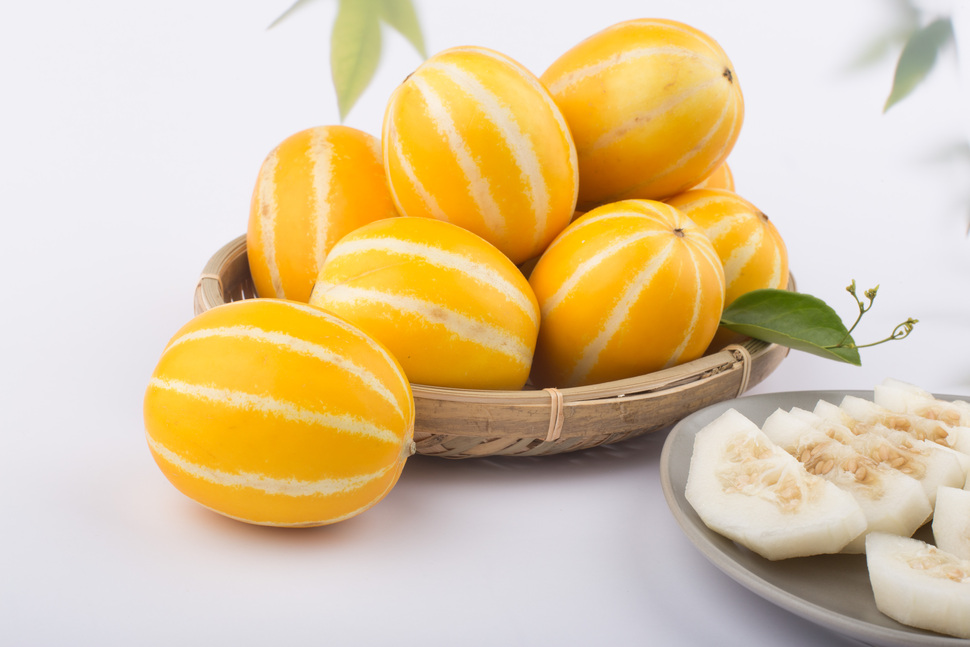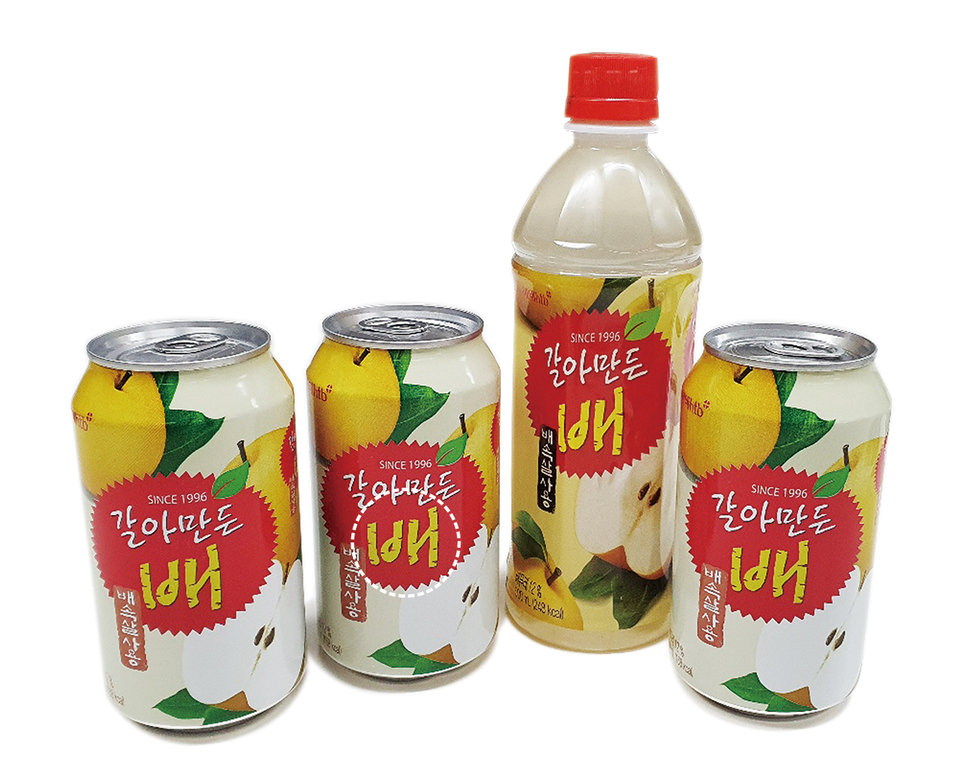[Nov] Unique foods that enrich Korean cuisine
Date Nov 25, 2022
 Korean melon chamoe (Courtesy of gettyimagesbank)
Korean melon chamoe (Courtesy of gettyimagesbank)
In this globalized world, foods and ingredients that used to be enjoyed in one region have spread to other parts of the world and are now available almost anywhere. But there still are some items that are consumed primarily in specific countries, and Korea has its fair share of those.
Chamoe, or Korean melon, is grown and eaten predominantly in Korea. It is known to have spread from China to Korea and Japan, but the variety featuring a yellow rind with white stripes and white flesh was once consumed exclusively in Korea. The species got the internationally standardized name “Korean melon” from the Codex Alimentarius Commission in 2016.
It is a melon but has a thinner rind and skin than honeydew or cantaloupe. Though not as sweet as those other melons, this popular summer fruit is rich in vitamin C and folic acid. And with a water content of around 90 percent, it can help quench thirst.
Whereas the seeds and placental tissue of honeydew or cantaloupe are typically discarded, those of chamoe are often eaten with the surrounding flesh to increase the sweet flavor.
 Korean pear (bae) juice
Korean pear (bae) juice
Although pears can be found all over the world, the Korean pear, bae, is unique in terms of its distinctive shape, texture and taste.
Compared to the “pear-shaped” varieties, the Korean pear can be as round and large as a softball. Its brownish skin covers flesh that is always whiter and crunchier and often sweeter and juicier than the well known gourd-shaped pears.
Korean pear juice has generated attention overseas for more than its taste. Tongue-in-cheek “research” in GQ corroborates an Australian study that concluded a cup of the juice before a drinking binge could help prevent hangovers. One Amazon ad touts canned Korean pear juice as “good cure for hangover.” The can’s cursive Hangeul font for bae “배” lends itself to the English-centric nickname: “IdH.”
 Acorn jelly (dotori-muk) (Courtesy of gettyimagesbank)
Acorn jelly (dotori-muk) (Courtesy of gettyimagesbank)
Koreans have found food sources from natural products that other cultures consider inedible. The acorn is one example. People around the world often consider acorns as merely food for squirrels, and many countries in Europe use them in pig feed, but Koreans like to consume acorns in gelatin form.
Making dotori-muk (acorn jelly) is quite a long process: drying and grinding acorns, mixing the acorn powder with water, waiting for it to settle and draining the water residue, mixing the sediment with fresh water and boiling it while stirring, and finally chilling it to get the jelly.
Typically just called “muk,” this acorn jelly is bland, so it is usually eaten with a mix of soy sauce and chili pepper powder and sometimes with assorted vegetables. It can also be shredded like thick noodles and eaten with vegetables in cold broth, or with rice in either cold or hot broth.
Another ingredient Koreans use a lot are soybean sprouts (kongnamul). They are similar but slightly different from mung bean sprouts, which are largely used in foods in Southeast Asia: soybean sprouts are crunchier due to the yellow “head” (bean), and mung bean sprouts are softer.
Soybean sprouts are easy to grow, and anybody can grow them at home by watering the beans. This is one of the reasons that soybean sprouts are widely used in various dishes in Korea: Kongnamul-muchim, one of the most common side dishes, is made by briefly boiling and then seasoning the sprouts; kongnamul-guk (soup) retains the boiled sprouts in the broth; kongnamul-gukbap” (literally “soup-rice”) is a heartier version with seafood added; and soybean sprouts appear in various other dishes, like steamed fish, as an accompanying vegetable.
**If you have any questions about this article, feel free to contact us at kocis@korea.kr.**

The Ministry of Culture, Sports and Tourism's "Korea Here & Now" work can be used under the condition of "Public Nuri Type 1 (Source Indication)."




